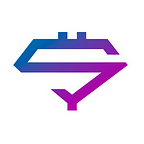The Shortest Guide to Bitcoin Halving
One of the most important days in the modern history of Bitcoin is approaching. Somewhere in the middle of May, the whole Bitcoin network will switch to a reduced rate of creating new coins. Hence, the block reward will be reduced by half, as well. No surprises that this event is known as Bitcoin halving! But what is it and how it will affect us? Let’s try to figure it out together.
In this simple and short guide, Superorder explains what is a Bitcoin halving, how it works, and why numerous traders expect it eagerly.
What Is a Bitcoin Halving?
TL;DR: a preplanned event that halves the rate of creating BTC and also halves the reward for each added block.
There’s no secret that there will be only 21 million BTC overall. Now, around 18.2 million in circulation. But it doesn’t mean that we will see the end of Bitcoin production soon — due to halvings. In the BTC network, these events occur every 210,000 blocks. They cut the production rate of new coins by increasing the difficulty of the mining process. As a result, the block reward decreases by half, too.
How Do Halvings Work Overall?
TL;DR: some blockchain systems (and Bitcoin, particularly) have preprogrammed algorithms that dictate when the generation rate should drop.
Regardless of the system itself, underlying algorithms of halvings are similar. Blockchain codes such as Bitcoin Core available on the GitHub set the rates at which new coins should be created. They determine basic difficulty rules and specify how much miners get for adding new blocks to chains. Halvings are just preplanned code changes that modify these rules to keep the production rate optimized and demand high.
When Is the Next Bitcoin Halving?
TL;DR: according to different estimations based on blockchain stats, this event will take place somewhere between May 8 and May 24.
As Satoshi Nakamoto stated, halvings should occur every 210,000 blocks, and there will be 32 such events at all. After the launch of Bitcoin in 2009, there were only two halvings:
- November 28, 2012 — the reward cut from 50 BTC to 25 BTC per block.
- July 9, 2016 — the reward cut from 25 BTC to 12.5 BTC per block.
There are different approaches to calculations but many sources claim that the third halving with 6.25 BTC per block will be on the week after May 18. Still, now, countdowns report that it will be in 90–93 days (as of February 11), i.e. between May 11 and 14. The final halving is expected in the 2140s, and it will mark the end of BTC production.
How the Next Halving Will Affect the Community?
TL;DR: the reward will be reduced so some miners may quit the game and increase centralization, respectively. Big companies may get more control.
Even today, BTC mining isn’t as profitable as it was a few years ago. Mainly, the industry is controlled by large mining pools, including fully private ones. Big enterprises like Bitmain invest millions of dollars into powerful mining equipment — ASICs. In this case, halving can centralize the market even more, forcing small players to abandon their independent activities due to lower rewards.
However, there are two ways to keep regular participants interested in Bitcoin instead of altcoins:
- Discover new mining ways. Historically, people used graphic processors to create blocks. Today is the era of ASICs. Tomorrow, we can see new innovative options that can return small miners into the game.
- Rise the price. Evidently, the more expensive BTC is the more interested miners are. To cover expenses on hardware and electricity, they should get more fiat money even if they get less BTC. It’s possible when the price is increasing.
Will the BTC Price Change?
TL;DR: historically, the price increased after Bitcoin halvings. However, there are no guarantees because the supply/demand principle is more powerful.
After previous halvings, the price of Bitcoin jumped significantly. One year after the first halving, the price increased from $11 to $1,038. As for the second one, it was $576 one month before it, increased to $650 right after the event, and reached $2,527 in a year. Experts think that the main reason is in the higher scarcity of the asset and in FOMO.
But there are no guarantees that the market will follow the same pattern. Today, the crypto world is more developed and matured, there are more coins available for users. Some critics even insist that the expected price surge already passed during the gradual growth of prices earlier. Eventually, the rates will depend on the overall demand/supply ratio.
Why Halvings Matter?
TL;DR: these events provide for a stable cryptocurrency coins’ generation rates and help to maintain demand.
Satoshi Nakamoto didn’t explain the reasons behind halvings in detail. Some researchers think that these events help cryptocurrency assets to remain demanded, just like real gold or other finite resources. Others say that Satoshi wanted to attract more users in the beginning by making coin distribution rates higher.
Today, we can only wait for the next halving. As for trading decisions, it’s up to you, but we think that the closer the date is the more hype will arise around it.
